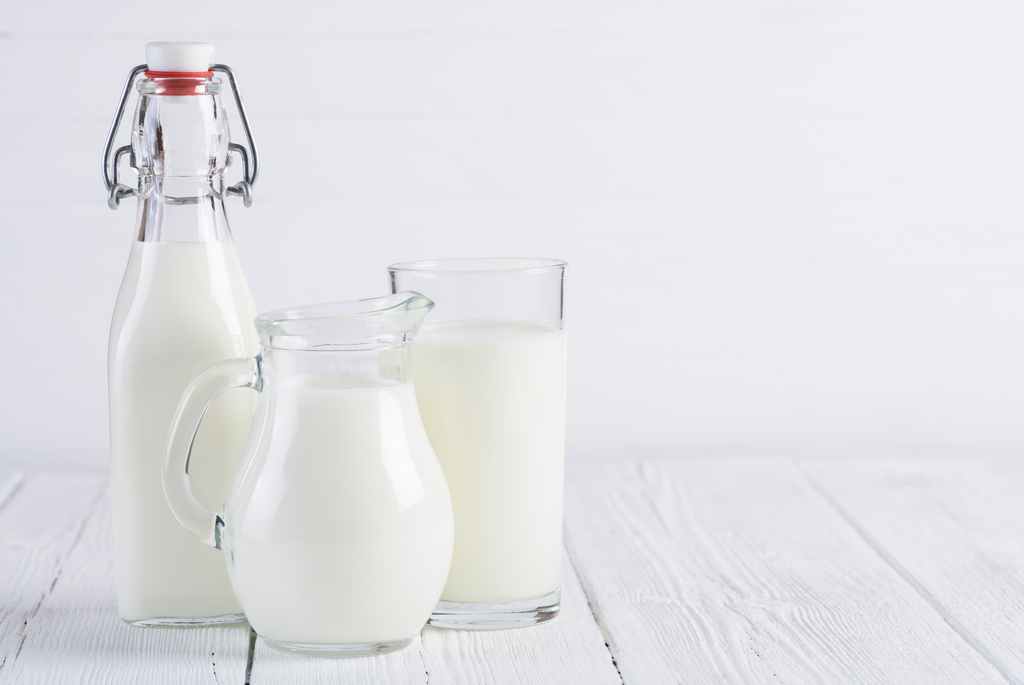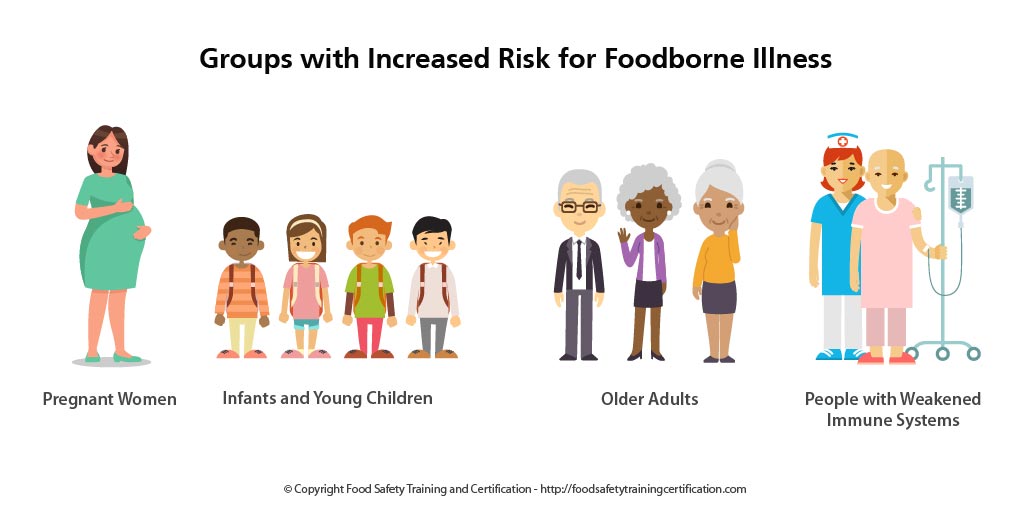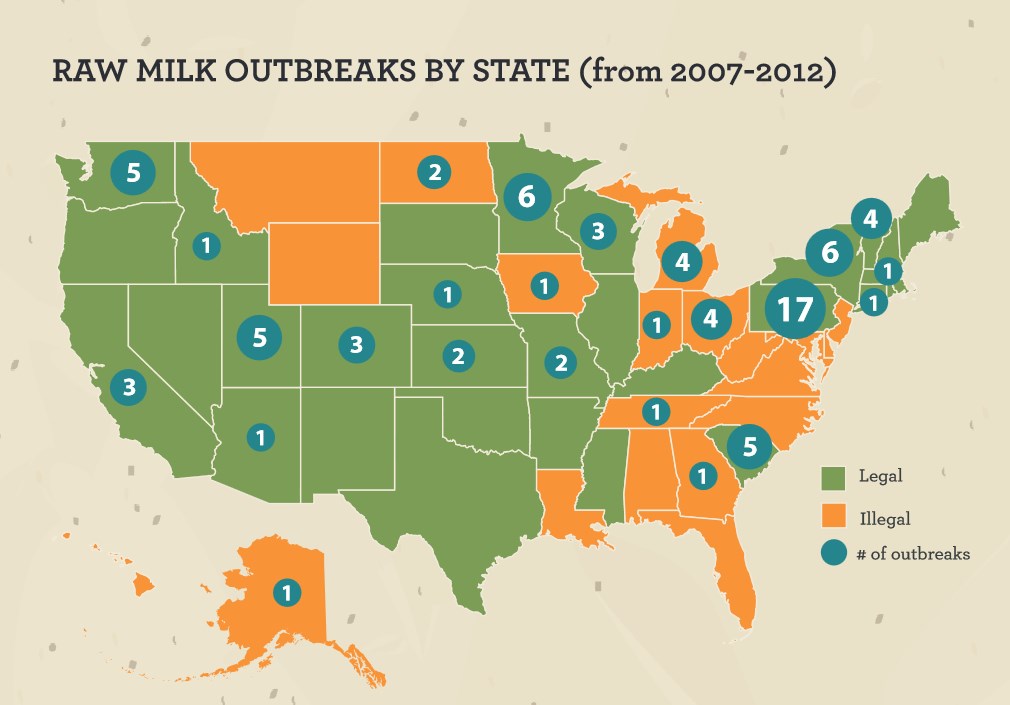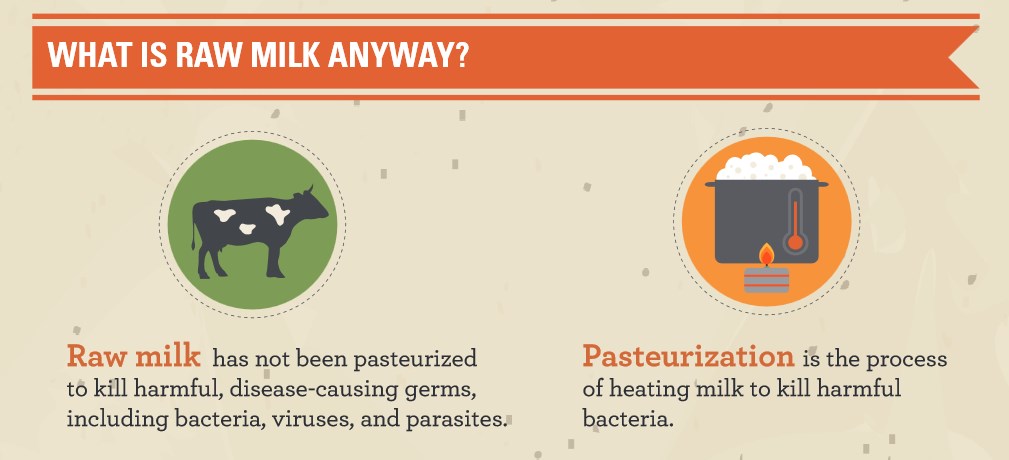National Wine and Cheese Day encourages people to experiment and enjoy one of the most basic, and classic, food-and-drink pairings.
But before you celebrate, educate yourself on the prevalence of harmful bacteria in various types of cheeses. Soft cheeses made with raw (unpasteurized) milk can contain harmful germs such as Listeria. Cheese made with pasteurized milk is a safer choice.
The growing popularity of unpasteurized dairy to create milk and cheese products in the U.S. has raised public health concerns.
 Image Source: Shutterstock
Image Source: Shutterstock Raw Milk and Cheese Illness Stats
A report from the June 2017 issue of the journal Emerging Infectious Diseases of the CDC states that:
- Raw milk and cheese products account for 96% of foodborne illnesses linked to contaminated dairy and cheeses;
- Unpasteurized dairy products cause 840 times more illnesses and 45 times more hospitalizations than pasteurized products;
- Were estimated to cause on average 761 illnesses and 22 hospitalizations per year in the United States.
Listeria monocytogenes is often connected to unpasteurized dairy products. It can cause serious and sometimes fatal infections in young children, pregnant women and the elderly.
- Learn about foodborne pathogens, cross contamination, cold and hot food safety, and best practices to prevent foodborne illness.
- Food Manager ANSI Certification: $99.00 - Valid in all States
- Food Handler Training: Only $7.00!
- 10% OFF: Enter Promo Code "train10off" at Checkout
As consumption of unpasteurized dairy products grows, illnesses will increase steadily; a doubling in the consumption of unpasteurized milk or cheese could increase outbreak-related illnesses. Proponents of raw milk consumption rave about its positive health effects, pointing out that leafy green vegetables actually cause more foodborne illnesses than dairy product
What is raw dairy or milk?
Raw milk is milk from cows, sheep, or goats that has not been pasteurized to kill harmful bacteria. This raw, unpasteurized milk can carry dangerous bacteria such as Salmonella, E. coli, and Listeria, which are responsible for causing numerous foodborne illnesses.
Raw Dairy Promotes Bacteria Growth
Raw milk is milk that has not been pasteurized. Milk is an excellent medium for microbial growth, and when stored at ambient temperature bacteria and other pathogens soon proliferate.
Illness and Deaths Caused by Raw Milk & Cheese
- Pennsylvania Department of Health Advisory (July 2019) – The Pennsylvania Department of Health advised residents who purchased milk from Creamworks Creamery in Waymart, Wayne County, they should not drink it or use it in cooking because it may contain a bacteria, Yersinia enterocolitica, that could make them sick.
- CDC: Food Safety Alert – At the end of 2018, a New York resident was diagnosed with an infectious disease called brucellosis after drinking raw milk from Miller’s Biodiversity farm in Pennsylvania. The CDC confirmed that this farm’s raw milk did, in fact, contain a rare strain of the Brucella bacterium, RB51, which is resistant to first-line antibiotics and can be difficult to diagnose given its flu-like symptoms.
As of January 22, 2019, investigators have determined that people in 19 states have bought or consumed raw milk from the implicated farm. The states are Alabama, California, Connecticut, Florida, Georgia, Iowa, Maryland, Massachusetts, Michigan, Minnesota, Mississippi, New Jersey, New York, North Carolina, Ohio, Pennsylvania, Rhode Island, South Carolina, and Virginia. - CDC: Food Illness Outbreak Summary – In March 2017, two people died following an outbreak of listeria linked to a popular artisanal raw milk cheese made in upstate New York. The deaths occurred in Vermont and Connecticut. Four other people in New York and Florida reported feeling sick after eating Ouleout, the artisanal cheese, which is produced by New York-based Vulto Creamery in Walton.
- California Department of Public Health (CDPH) Recall – In the spring of 2015, three children under age 5 were sickened with campylobacteriosis after consuming raw goat’s milk from Claravale Farm of San Benito County, CA. One of the children was hospitalized, and all recovered, but a Campylobacter infection can lead to Guillain-Barré syndrome, a form of progressive paralysis from which most, but not all people recover.
- Pennsylvania Department of Health Advisory (April 2015) – In early 2015, the Pennsylvania Agricultural Department directed consumers who purchased raw milk from Breezy Meadows Dairy, Bird-In-Hand, PA to discard it due to Salmonella contamination.
The illness and deaths highlighted concerns over safety regulations around artisanal cheese production in the United States, particularly around the raw-milk cheese segment, which re-emerged only about a decade ago, experts say. The stats continue a debate between the virtues of raw-milk cheese, which aficionados say tastes better, and safety.
 Image Source: Shutterstock
Image Source: Shutterstock Groups Vulnerable to Raw Milk
Harmful bacteria can seriously affect the health of anyone who drinks raw milk, or eats foods made from raw milk. However, the bacteria in raw milk can be especially dangerous to people with weakened immune systems, older adults, pregnant women, and children. In fact, the CDC analysis found that foodborne illness from raw milk especially affected children and teenagers.

National Wine and Cheese Day on Social Media
Resources and References
- Infographic: Raw Milk and Food Safety – Source: CDC – Raw Milk and Food Safety
- Costard, S., Espejo, L., Groenendaal, H., & Zagmutt, F. J. (2017). Outbreak-Related Disease Burden Associated with Consumption of Unpasteurized Cow’s Milk and Cheese, United States, 2009–2014. Emerging Infectious Diseases, 23(6), 957-964. https://dx.doi.org/10.3201/eid2306.151603.
- CDC. National Notifiable Diseases Surveillance System. Cryptosporidiosis (Cryptosporidium spp.): 2012 case definition. Atlanta, GA: US Department of Health and Human Services, CDC; 2014. Available at http://wwwn.cdc.gov/nndss/script/casedef.aspx?condyrid=648&datepub=1/1/2012%2012:00:00%20am.
- Robinson TJ, Scheftel JM, Smith KE. Raw milk consumption among patients with non–outbreak-related enteric infections, Minnesota, USA, 2001–2010. Emerg Infect Dis 2014;20:38–44.
- Harper CM, Cowell NA, Adams BC, Langley AJ, Wohlsen TD. Outbreak of Cryptosporidium linked to drinking unpasteurised milk. Commun Dis Intell Q Rep 2002;26:449–50.
- Langer AJ, Ayers T, Grass J, Lynch M, Angulo FJ, Mahon BE. Nonpasteurized dairy products, disease outbreaks, and state laws—United States, 1993–2006. Emerg Infect Dis 2012;18:385–91.
- Mungai EA, Behravesh CB, Gould LH. Increased outbreaks associated with nonpasteurized milk, United States, 2007–2012. Emerg Infect Dis 2015;21:119–22.



